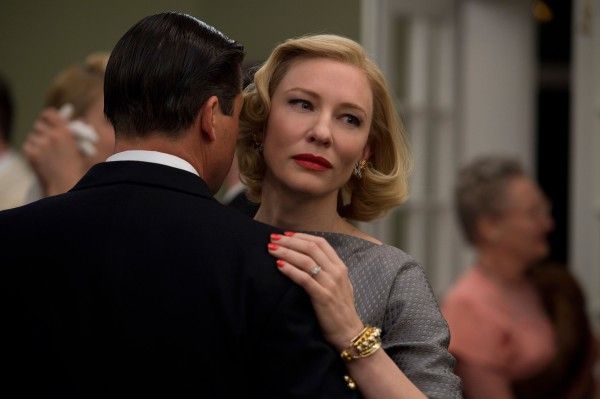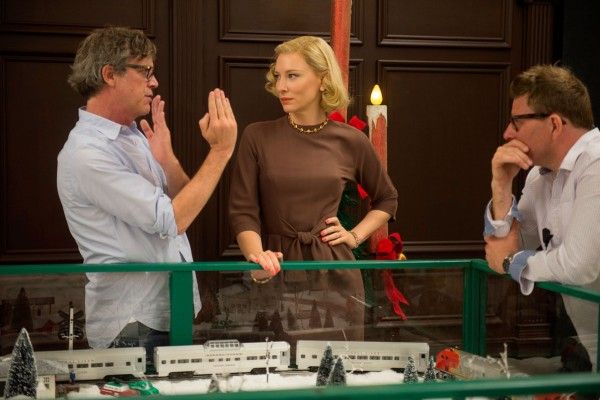In 2002, filmmaker Todd Haynes explored male homosexuality in 1950s America in Far From Heaven. In Carol, presented in the Official Selection at Cannes, he tackles lesbian romance, adapted from the Patricia Highsmith novel The Price of Salt, also set in the same time period. It is one of those films that you either love or have mixed feelings about. It may be dazzling in cinematography, acting and ambiance, but it falters in script.
We first meet Carol Aird and Therese Belivet in a tearoom. It is obvious thy have not seen one another in a while. But they’re interrupted by one of Therese’s friends who invites her to a party. As hey leave, we flashback to the first encounter between these two women.
Carol Aird (Cate Blanchett) is a wealthy New Jersey housewife on the brink of divorce because of an affair she’d had with her childhood friend and confidante Abby (Sarah Paulson). While Christmas shopping for her daughter, she meets doe-eyed salesgirl Therese (Rooney Mara, who could be a dead ringer for Audrey Hepburn). Both mesmerized by the other, there is an immediate connection between the young girl and elder woman who, at Therese’s suggestion, buys the little girl a train set. Perhaps deliberately, she leaves her gloves behind, and it is the return of these gloves that leads to a series of dates that build up to their romance.
When Carol realizes that she is losing custody of her daughter, she decides to drive west and invites Therese to accompany her on the road trip. But by the time they drive off, we’re already halfway through the film where, thus far, not much has happened apart their meeting and Carol’s angry and overbearing husband Harge (Kyle Chandler) vowing to take full custody of their little girl. That’s a long time in movie time zone to create a build-up.
The screenplay collapses with some of its predictable dialogue. It seems simplistic, but perhaps Haynes intentionally wanted it to be subdued. While both actresses master their trade, the discourse renders them one-dimensional and uninspired. But in fact, both are struggling with their sexuality: Carol is unhappy living a lie and Therese is unsure of her sexuality.
We are submerged in the Eisenhower era of America, in 1953, where homosexuality was evidently taboo, where the country was covered in a veil of hypocrisy, and even the emerging riffs of rock ’n’ roll couldn’t quite lift that yet. It is an epoch that criminalizes love yet glorifies war. Visually, this is Dennis Hopper’s urban Fifties.
Oftentimes Blanchett’s commands and facial expressions sometimes seem left over from the Wicked Stepmother role she played in Cinderella, as if Carol were substituting Therese for the daughter whose custody she was about to lose. (We can sometimes sense the age difference between the two women.) She is not the most tender of ladies, at least not from the outside. She is living her life in a shell, hardened by the reigning conformism and convention. But all she wants to do is be herself.
Their connection is palpable, and Haynes captures even the intangible. He frames his actresses like the photos Therese takes, while Edward Lachman’s camera always captures a strong color to stand out from the chilly hues of the film.The love scenes are aesthetic, elegant, and above all discreet, an artistic tableau of the consummation of their love like only Haynes paints, unlike the graphic imagery in Abdellatif Kechiche’s La Vie d’Adèle (Blue is the Warmest Color), winner of the Palme d’Or in 2013.
Todd Haynes is one of the most analytic filmmakers. His filmography may be small, but his work is dense. So why does this sixth feature film seem less galvanized at intervals?
Grade: B+
Click here for all our Cannes coverage.



